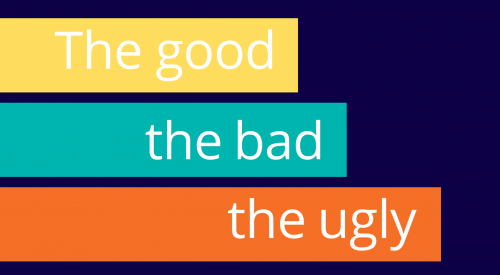Podcast: Play in new window | Download
Subscribe: Apple Podcasts | Android | RSS

Today’s interview is with Tom Libretto, Senior Vice President and Chief Marketing Officer at Pega. I caught up with Tom at Pega’s recent customer event, Pegaworld, in Las Vegas and we grabbed a few minutes to talk about Pega’s recent research report: 2019 global customer service insights: The good, the bad, and the ugly, what they found out and what lessons organisations should be learning and what they should be doing differently.
This interview follows on from my recent interview – C+/B- is the grade the customer experience industry currently deserves – Interview with Bruce Temkin – and is number 305 in the series of interviews with authors and business leaders that are doing great things, providing valuable insights, helping businesses innovate and delivering great service and experience to both their customers and their employees.
Here’s the highlights of my chat with Tom:
- Check out Pega’s new research report: 2019 global customer service insights: The good, the bad, and the ugly.
- Here’s the highlights:
- The good – Customers and service providers agree on what matters most
- Customers, employees, and leaders all agree: the three most important aspects of service are a fast response, knowledgeable service agents, and a quick resolution to the issue. In fact, 95% of customers are looking for some degree of proactive communication from the companies with which they do business.
- The bad – Business expectations don’t match customers’ realities
- Leaders and employees tend to be overconfident in the quality of customer service their business provides. Those at the top have a particularly inflated view of how their organizations are doing. Leaders are four times more likely than customers to rate the level of service they provide as excellent.
- The ugly – Customer service shortcomings carry a cost
- Customers expect service that’s quick and easy. When they must wait too long for a response or resolution, they quickly and easily become frustrated. And that can pose great threat to a business. Three out of four customers have stopped using an organization’s services because of a poor customer service experience.
- The good – Customers and service providers agree on what matters most
- You can’t you can’t fix something if you don’t know it’s broken.
- Good still looks the same. But, expectations are rising.
- While 95 percent of customers are looking for some degree of proactive communication from the companies they do business with, we’re still in the early innings in terms of a critical mass of organizations on the planet operationalizing that concept.
- Companies that are being successful in this regard are ones that are being very specific about the customer micro journey that they they start with.
- Otherwise it becomes too big of a thing to do and ends up only being a bullet point on a PowerPoint chart.
- There is almost a reliance on tech being the silver bullet answer to a customer service transformation.
- Technology is certainly a critical part of the puzzle. But, it’s only one piece of the equation.
- The companies that we’ve seen be more successful invest in all layers of the organization consistently spending time in the contact center or shadowing calls so they have a regular pulse on the situation in the customer service environment.
- A lot of the more enlightened companies from a customer service perspective are investing lots of time and energy in making their employees happy.
- Tom’s two words that would describe taking a punk approach to CX: Pioneer and maverick (in a very good sense).
- Tom’s companies that embody a punk approach to CX: Zappos and Sirius XM.
- Check out Pega’s new research report: 2019 global customer service insights: The good, the bad, and the ugly.
About Tom

Tom Libretto is Chief Marketing Officer and Senior Vice President, responsible for global marketing initiatives and functions, including brand, advertising, digital marketing, product marketing, industry marketing, demand generation, corporate communications, customer engagement, social media, events, and marketing operations.
Tom has more than 20 years of marketing leadership experience in global technology organizations including Lotus, IBM, Nokia, and most recently as managing director, global head of digital experience at JPMorgan Chase (JPMC), the largest bank in the US. His multi-disciplinary background includes B2B and B2C marketing and sales experience as well as product management, corporate strategy, and business development roles.
While at JPMC, Tom was responsible for defining and executing digital transformation initiatives for the firm, directing digital marketing, social media, brand activation, email marketing, marketing automation, CRM/Business Intelligence, web, mobile, sales enablement, and marketing operations. Previously, as Global VP, digital marketing and CRM at Nokia, Tom drove worldwide digital, CRM, social, and “always-on” marketing activities. Earlier in his career, Tom held several marketing and sales positions at IBM and Lotus.
Tom is a graduate of the College of the Holy Cross, where he earned his undergraduate degree in economics. He is a frequent presenter at industry conferences and events such as the World Federation of Advertisers (WFA), Association of National Advertisers (ANA), Web Marketing Association (WMA), Mobile Marketing Association (MMA), and SXSW.
Find out more about Pega at www.pega.com, check out their new research report: 2019 global customer service insights: The good, the bad, and the ugly, say Hi to them on Twitter @pega and feel free to connect with Tom on LinkedIn here.



